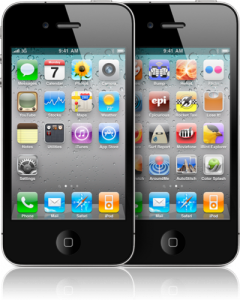
Mobile operator AT&T is no longer the exclusive carrier of the Apple iPhone in the United States, and some industry watchers expected that the arrival of the iPhone on top U.S. mobile carrier Verizon Wireless would put a big dent in AT&T’s bottom line. Not so—or, at least, not yet, according to AT&T’s latest financial results. AT&T says they saw a 10.2 percent increase in wireless revenue for the quarter, with a corresponding 8.6 percent increase in wireless service revenue. And those iPhone sales? Up nearly one million year-on-year to a total of 3.6 million. However, perhaps more significantly, 23 percent of iPhone subscribers were new to AT&T, and churn amongst iPhone subscribers was unchanged since last year.
“We delivered another robust mobile broadband growth quarter for a very solid start to the year,” said AT&T chairman and CEO Randall Stephenson, in a statement. “We posted double-digit wireless revenue growth, and we set new first-quarter records in total net adds, connected device net adds, and smartphone sales. Growth in tablets and other branded computing subscribers also continues to be strong.”
Although AT&T says it added 2 million wireless subscribers during the quarter—bringing their total to 97.5 million—the bulk of those additions cam from “connected device” additions. Excluding integrating customers from Alltell and Centennial, AT&T added 62,000 contract subscribers for the quarter, compared to 400,000 during its fourth quarter of 2010. However, industry watchers had been expecting to see AT&T lose at least that many contract customers during the quarter due to the iPhone’s availability via Verizon. That AT&T was able to stave off subscriber losses would seem to indicate the bulk of the current demand for a Verizon iPhone is from Verizon customers—although AT&T might have to work to retain subscribers as of its iPhone user subscriber agreements expire. Overall, AT&T sold more than 5.5 million smartphones during the quarter, the majority of which were iPhones.
Overall, AT&T’s revenue for the quarter totaled $31.2 billion, an increase of 2.3 percent compared to a year ago. However, the company did see its wireless operating income margin drop to 25.8 percent compared to 30 percent a year ago—meaning the company is spending more money to get (and keep) wireless subscribers.


